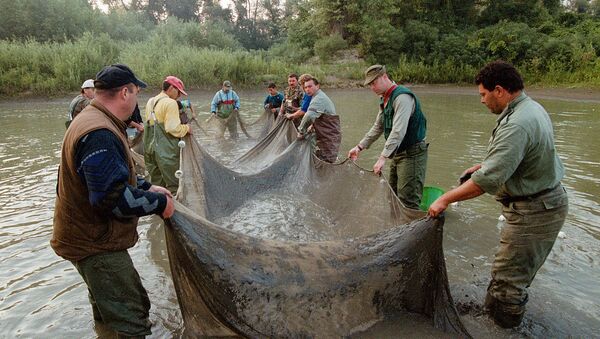One such technique is heap leaching. This mining method is a series of chemical reactions which essentially extracts specific minerals from ore with a substance, then re-separates the extracted mixture into the required mineral and the chemical used for reaction, leaving undesired minerals. In case of gold, the cyanide process is used. Yes, that cyanide – the extremely poisonous substance. The use of it for gold mining is controversial and banned in a number of countries – but not Romania.
Aurul, a joint venture owned by the Australian company Esmeralda Exploration and the Romanian government, was using this method Baia Mare, a municipality in Romania. The cyanide-laced water used in the process was collected in a special dam. January 30, 2000, this dam burst and released 100,000 cubic meters of the contaminated water. The Regional Environmental Center For Central And Eastern Europe wrote in a report:
The break was probably caused by a combination of design defects in the facilities set up by Aurul, unexpected operating conditions and bad weather. The contaminated spill travelled into the rivers Sasar, Lapus, Somes, Tisza and Danube before reaching the Black Sea about four weeks later. Some 2,000 kilometres of the Danube’s water catchment area were affected by the spill.
The spill into the farmland and into the Someş River resulted in levels exceeding permitted cyanide concentration by 700 times. The real problem was that the Someș river flows into the Tisza, which is Hungary's second largest river. The latter, in turn, flows into the Danube river, which flows through 10 nations and empties in the black sea. Overall, drinking water of over 2.5 million people was contaminated. Apart from cyanide, other substances left a long-lasting negative impact on the river and its shores. Some regions had up to 80% of the local wildlife die shortly after the spill.
The report by United Nations Environment Programme and Office for the Coordination of Humanitarian Affairs highlighed:
The recent accidents in Baia Mare and Baia Borsa have dramatically increased public awareness of the environmental and safety hazards of the mining industry. The Baia Mare accident showed that the level of public knowledge and understanding of risks inherent in mining and related industrial processes is very low. It also showed that there is insufficient communication between the various levels of authorities and between the authorities, the NGOs and the public concerning emergency preparedness, emergency response and damage prevention options and possibilities.
So, did anything change for the mining industry after the accident? A report made by the European Union blamed the design faults for the accident, although whether this will be used to change mining practices remains unclear. The Romanian Parliament tried to ban gold cyanidation in Romania – the process which led to the disaster. None of these attempts had been successfully, and the practice is still widely used.

